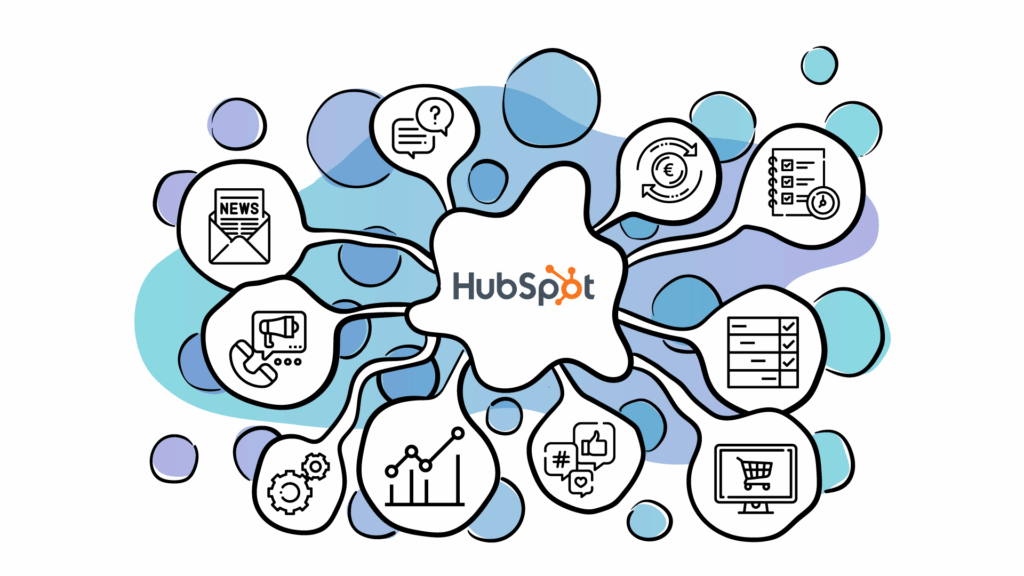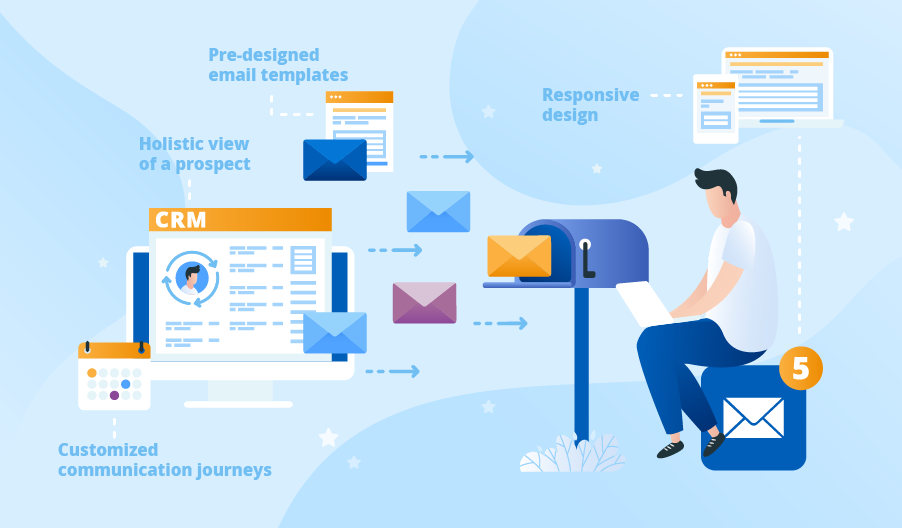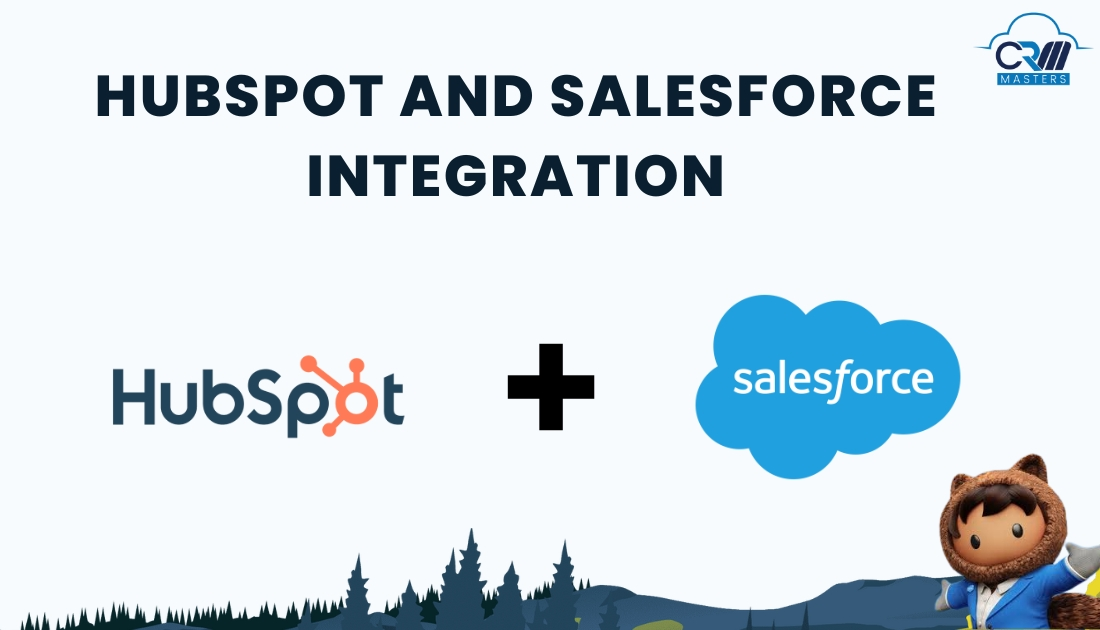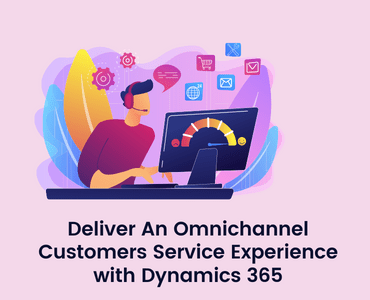
Supercharge Your Sales: A Comprehensive Guide to CRM Integration with HubSpot
In today’s fast-paced business environment, staying ahead of the competition requires more than just a great product or service. It demands a deep understanding of your customers, efficient workflows, and seamless communication across all departments. This is where Customer Relationship Management (CRM) systems come into play, and when integrated effectively, they become the backbone of a successful sales and marketing strategy. This guide delves deep into the world of CRM integration, with a particular focus on HubSpot, a leading platform in the marketing and sales automation space. We’ll explore why CRM integration is crucial, the specific benefits of integrating with HubSpot, the different integration methods, best practices, and much more. Whether you’re a small business owner, a marketing professional, or a sales leader, this guide will provide you with the knowledge and tools you need to leverage CRM integration to its fullest potential.
Why CRM Integration Matters
Before we dive into the specifics of HubSpot integration, let’s understand the fundamental importance of integrating your CRM with other business systems. In a nutshell, CRM integration is the process of connecting your CRM system with other software applications you use, such as your marketing automation platform, email marketing tools, e-commerce platform, and even your accounting software. This connection allows data to flow seamlessly between these systems, eliminating data silos and providing a unified view of your customers.
Here are some key reasons why CRM integration is critical for business success:
- Improved Data Accuracy: Integration ensures that data is consistent across all systems, reducing the risk of errors and inconsistencies.
- Enhanced Efficiency: Automation of data entry and other repetitive tasks frees up your team to focus on more strategic activities.
- Better Customer Insights: A unified view of customer data allows you to understand customer behavior, preferences, and needs more effectively.
- Increased Sales and Revenue: By streamlining the sales process and providing sales teams with the information they need, CRM integration can lead to higher conversion rates and increased revenue.
- Improved Marketing ROI: Integration enables you to personalize your marketing campaigns and target the right customers with the right messages, leading to a higher return on investment.
- Streamlined Communication: Integrated systems facilitate seamless communication between sales, marketing, and customer service teams, ensuring that everyone is on the same page.
- Enhanced Decision-Making: Access to real-time data and comprehensive reports empowers you to make informed decisions about your business strategy.
Without integration, your teams are likely working in silos, manually transferring data, and missing critical information. This leads to inefficiencies, errors, and ultimately, lost opportunities. CRM integration breaks down these silos, creating a cohesive and data-driven environment that fosters growth and success.
The HubSpot Advantage: Why Integrate Your CRM?
HubSpot is a powerful CRM platform that offers a wide range of features and functionalities to help businesses manage their sales, marketing, and customer service efforts. Integrating your CRM with HubSpot unlocks even greater potential, allowing you to leverage the platform’s capabilities to their fullest extent. Here’s why integrating your CRM with HubSpot is a smart move:
- Centralized Customer Data: HubSpot acts as a central hub for all your customer data, allowing you to track interactions, manage contacts, and gain valuable insights into customer behavior.
- Automated Workflows: HubSpot’s automation features allow you to automate repetitive tasks, such as lead nurturing, email marketing, and task assignments, freeing up your team to focus on more strategic activities.
- Improved Sales Productivity: HubSpot provides sales teams with the tools they need to manage their pipeline, track deals, and close more sales. Features like deal tracking, task management, and sales automation help boost productivity.
- Enhanced Marketing Automation: HubSpot’s marketing automation features allow you to create personalized email campaigns, track website activity, and nurture leads through the sales funnel.
- Seamless Integration with Other Tools: HubSpot integrates seamlessly with a wide range of other tools, including email marketing platforms, social media platforms, and e-commerce platforms, allowing you to create a cohesive and integrated marketing and sales ecosystem.
- Detailed Reporting and Analytics: HubSpot provides detailed reports and analytics, allowing you to track your progress, measure your results, and make data-driven decisions.
- Scalability: HubSpot is a scalable platform that can grow with your business, providing the features and functionalities you need as your business expands.
By integrating your CRM with HubSpot, you’re not just connecting two systems; you’re creating a powerful engine for growth and success. You are essentially equipping your teams with tools to work smarter, not harder, and providing them with the insights they need to make informed decisions.
How to Integrate Your CRM with HubSpot: Methods and Approaches
There are several ways to integrate your CRM with HubSpot, each with its own advantages and disadvantages. The best approach for you will depend on your specific needs, the complexity of your systems, and your technical expertise. Let’s explore the most common integration methods:
1. Native Integrations
HubSpot offers native integrations with many popular CRM systems, such as Salesforce, Microsoft Dynamics 365, and others. These native integrations are pre-built and designed to be easy to set up and use. They typically offer a high level of functionality and allow for seamless data synchronization between the two systems. This is often the easiest and most straightforward approach, especially if your CRM is one of the supported platforms.
Pros:
- Easy to set up and use
- Seamless data synchronization
- Pre-built and tested
- Often offer a high level of functionality
Cons:
- Limited to supported CRM systems
- May not offer all the customization options you need
2. Custom Integrations (APIs)
If your CRM is not one of the natively supported platforms, or if you need a more customized integration, you can use HubSpot’s APIs (Application Programming Interfaces). APIs allow you to connect your CRM with HubSpot by writing custom code. This approach offers the greatest flexibility and allows you to tailor the integration to your specific needs. However, it requires more technical expertise and development effort.
Pros:
- Maximum flexibility and customization
- Can be used to integrate with any CRM system
- Allows for complex data synchronization and automation
Cons:
- Requires technical expertise and development effort
- Can be time-consuming and expensive
- Requires ongoing maintenance
3. Third-Party Integration Platforms
Third-party integration platforms, such as Zapier, Integromat (now Make), and Tray.io, provide a no-code or low-code way to connect your CRM with HubSpot. These platforms offer pre-built connectors for a wide range of applications, making it easy to create integrations without writing any code. They are a good option for businesses that want to integrate their systems quickly and easily without the need for technical expertise.
Pros:
- No-code or low-code integration
- Easy to set up and use
- Offers pre-built connectors for a wide range of applications
- Faster and more cost-effective than custom integrations
Cons:
- May not offer all the customization options you need
- Can be limited by the features of the integration platform
- May require additional subscription fees
Choosing the Right Integration Method
The best integration method for you will depend on several factors, including:
- Your CRM system: Is your CRM one of the natively supported platforms?
- Your technical expertise: Do you have the technical skills to build a custom integration?
- Your budget: How much are you willing to spend on integration?
- Your integration requirements: What data needs to be synchronized, and what automation do you need?
Consider these factors carefully and choose the method that best meets your needs and budget. If you’re unsure, it’s always a good idea to consult with a HubSpot integration expert or a qualified IT professional.
Step-by-Step Guide to CRM Integration with HubSpot (Using Native Integrations)
Let’s walk through the general steps involved in integrating your CRM with HubSpot using native integrations. Keep in mind that the specific steps may vary depending on your CRM system.
- Assess your current CRM and HubSpot setup: Before you begin, take stock of your current CRM configuration and your HubSpot setup. Identify the data you want to sync and the workflows you want to automate.
- Choose the right integration: If a native integration is available for your CRM, select it in HubSpot. Navigate to the Integrations section in your HubSpot account and look for your CRM.
- Connect your CRM account: You’ll typically be prompted to enter your CRM login credentials to authorize the connection. Follow the on-screen instructions to authenticate your account.
- Configure data synchronization: Once the connection is established, you’ll need to configure the data synchronization settings. This usually involves mapping fields from your CRM to HubSpot and specifying how data should be synced (e.g., one-way or two-way sync).
- Test the integration: After configuring the settings, test the integration by manually syncing a few records. Verify that data is flowing correctly between the two systems.
- Activate the integration: Once you’re confident that the integration is working correctly, activate it to begin syncing data automatically.
- Monitor and maintain the integration: Regularly monitor the integration to ensure that data is syncing correctly. Make any necessary adjustments to the settings as your needs evolve.
Note: If you are using a custom integration or a third-party platform, the setup process will differ slightly, but the general principles remain the same.
Best Practices for CRM Integration with HubSpot
To ensure a successful CRM integration with HubSpot, follow these best practices:
- Plan your integration: Before you start, define your goals, identify the data you want to sync, and map out your workflows. A well-defined plan will help you avoid problems down the road.
- Clean up your data: Ensure that your data is clean and accurate before syncing it with HubSpot. This will prevent data inconsistencies and errors.
- Map your fields carefully: Pay close attention to field mapping to ensure that data is synced correctly between the two systems. Review the field mappings thoroughly.
- Test thoroughly: Test the integration thoroughly before activating it. Sync a few records manually and verify that the data is flowing correctly.
- Start small and scale up: Begin by integrating a small subset of your data and workflows. Once you’re comfortable with the integration, you can gradually expand it to include more data and workflows.
- Monitor your integration: Regularly monitor the integration to ensure that data is syncing correctly. Check for any errors or inconsistencies and address them promptly.
- Provide training: Train your team on how to use the integrated systems and how to leverage the new workflows.
- Document your integration: Document the integration process, including the settings, field mappings, and any custom code. This documentation will be helpful for troubleshooting and future updates.
- Stay updated: Keep your HubSpot account and your integrated CRM updated with the latest versions to ensure optimal performance and security.
- Seek professional help: If you’re unsure about any aspect of the integration process, don’t hesitate to seek professional help from a HubSpot integration expert.
By following these best practices, you can maximize the benefits of your CRM integration with HubSpot and create a powerful sales and marketing engine.
Troubleshooting Common CRM Integration Issues
Even with careful planning and implementation, you may encounter some issues during your CRM integration with HubSpot. Here are some common problems and how to troubleshoot them:
- Data Synchronization Errors: Data may not be syncing correctly between the two systems. This can be caused by incorrect field mappings, data inconsistencies, or network issues.
- Troubleshooting Steps: Double-check your field mappings, ensure that your data is clean and accurate, and verify that your network connection is stable. Review the integration logs for error messages and consult the HubSpot documentation or support resources.
- Duplicate Records: Duplicate records may be created in HubSpot or your CRM. This can be caused by incorrect data synchronization settings or by users manually entering data.
- Troubleshooting Steps: Review your data synchronization settings and ensure that duplicate records are being handled correctly. Implement rules to prevent duplicate records from being created.
- Missing Data: Data may be missing from HubSpot or your CRM. This can be caused by incorrect field mappings, data inconsistencies, or by data not being synced at all.
- Troubleshooting Steps: Double-check your field mappings and ensure that all the necessary fields are being synced. Verify that the data is available in the source system and that the sync is configured correctly.
- Performance Issues: The integration may be slowing down the performance of your systems. This can be caused by large amounts of data being synced or by network issues.
- Troubleshooting Steps: Optimize your data synchronization settings to reduce the amount of data being synced. Monitor your network performance and address any issues.
- Authentication Errors: You may encounter errors related to authentication and authorization.
- Troubleshooting Steps: Verify the credentials used for the integration, and ensure that they have the necessary permissions to access the data in both systems.
If you encounter any of these issues, don’t panic! Most of these problems are easily solvable with some troubleshooting. The key is to identify the root cause of the problem and take corrective action.
The Future of CRM Integration with HubSpot
The future of CRM integration with HubSpot looks bright. As technology continues to evolve, we can expect to see even more sophisticated integration capabilities, allowing businesses to connect their systems in new and innovative ways. Here are some trends to watch for:
- Artificial Intelligence (AI): AI will play an increasingly important role in CRM integration, automating tasks, providing insights, and personalizing customer experiences.
- Enhanced Automation: We can expect to see even more advanced automation features, allowing businesses to automate complex workflows and streamline their processes.
- Improved Data Analytics: Data analytics will become even more sophisticated, providing businesses with deeper insights into customer behavior and helping them to make more informed decisions.
- Increased Personalization: CRM integrations will enable businesses to personalize customer experiences to a greater extent, tailoring their interactions to individual customer needs and preferences.
- Integration with Emerging Technologies: We can expect to see HubSpot integrate with a wider range of emerging technologies, such as virtual reality (VR), augmented reality (AR), and the Internet of Things (IoT).
The possibilities are endless, and businesses that embrace CRM integration will be well-positioned to thrive in the years to come.
Conclusion: Harness the Power of CRM Integration with HubSpot
CRM integration with HubSpot is not just a technical exercise; it’s a strategic imperative for businesses that want to achieve sustainable growth and success. By connecting your CRM with HubSpot, you can streamline your sales and marketing processes, improve your customer insights, and boost your overall productivity. This guide has provided you with a comprehensive overview of CRM integration, including the benefits, methods, best practices, and troubleshooting tips. Now it’s time to take action and start integrating your systems. Embrace the power of CRM integration with HubSpot, and watch your business soar!


